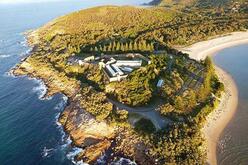Australia’s energy future is taking a giant leap forward with the announcement of the recently published ³Ô¹ÏÍøÕ¾ Roadmap for Bidirectional Electric Vehicle Charging (the Roadmap), commissioned by ARENA in partnership with RACE for 2030 and delivered by enX Consulting.
The Roadmap lays the foundation on which key industry and government stakeholders can identify and adopt policy settings and strategy initiatives to realise the benefits of bidirectional EV charging for Australians.
Bidirectional charging refers to the ability of an electric vehicle (EV) or other energy storage systems to not only draw power from the grid to charge its battery, but also to send power back to the grid, your home or directly to other devices. This capability allows the EV to act as an energy source when needed – essentially turning cars into batteries on wheels.
Bidirectional charging has the potential to become one of the largest forms of flexible energy storage in Australia and to materially reduce electricity costs for millions of Australians and accelerate national emissions reduction.
While not yet directly available to Australians, the technology has been successfully tested through small-scale trials and future benefits could include:
- Energy storage: Your EV can act as a backup power supply for homes or businesses in case of a power outage in place of a dedicated home battery.
- Reduced power bills: Once the technology becomes widely available, consumers with V2G-enabled EVs will have the opportunity to take advantage of their own ‘battery on wheels’ to respond to dynamic electricity pricing and make further savings.
- Grid support: It can help stabilise the power grid by supplying power back during times of high demand.
ARENA CEO, Darren Miller, said bidirectional charging, and particularly Vehicle-to-Grid (V2G) technology, means EVs won’t just be vehicles; they’re the future of distributed energy storage and represent a game-changing opportunity for Australia’s energy future.
“By the early 2030s, the battery capacity of our electric vehicle fleet is projected to outstrip all other forms of energy storage in the ³Ô¹ÏÍøÕ¾ Electricity Market”, Mr Miller said.
“With estimates suggesting 1.5 million EVs on Australian roads by 2030, even 10% of those adopting V2G could meet 37% of the NEM’s total storage needs while also giving Australians control over their contribution to the clean energy transition”
“This innovation isn’t just beneficial for the grid – it could also save Australians up to $5 billion in total by reducing the need for large-scale battery storage investments.
Bidirectional charging is a small but important step toward creating an Australian energy network that’s more renewable, more reliable and more affordable for all Australians”.
ARENA has been active in this space for several years. The Bidirectional Roadmap is the latest in a series of Australian-first studies and projects initiated by ARENA since 2019.
This included ARENA’s first V2X strategy, which committed to developing a national V2X market activation strategy, in partnership with wider government, industry and academic institutions.







